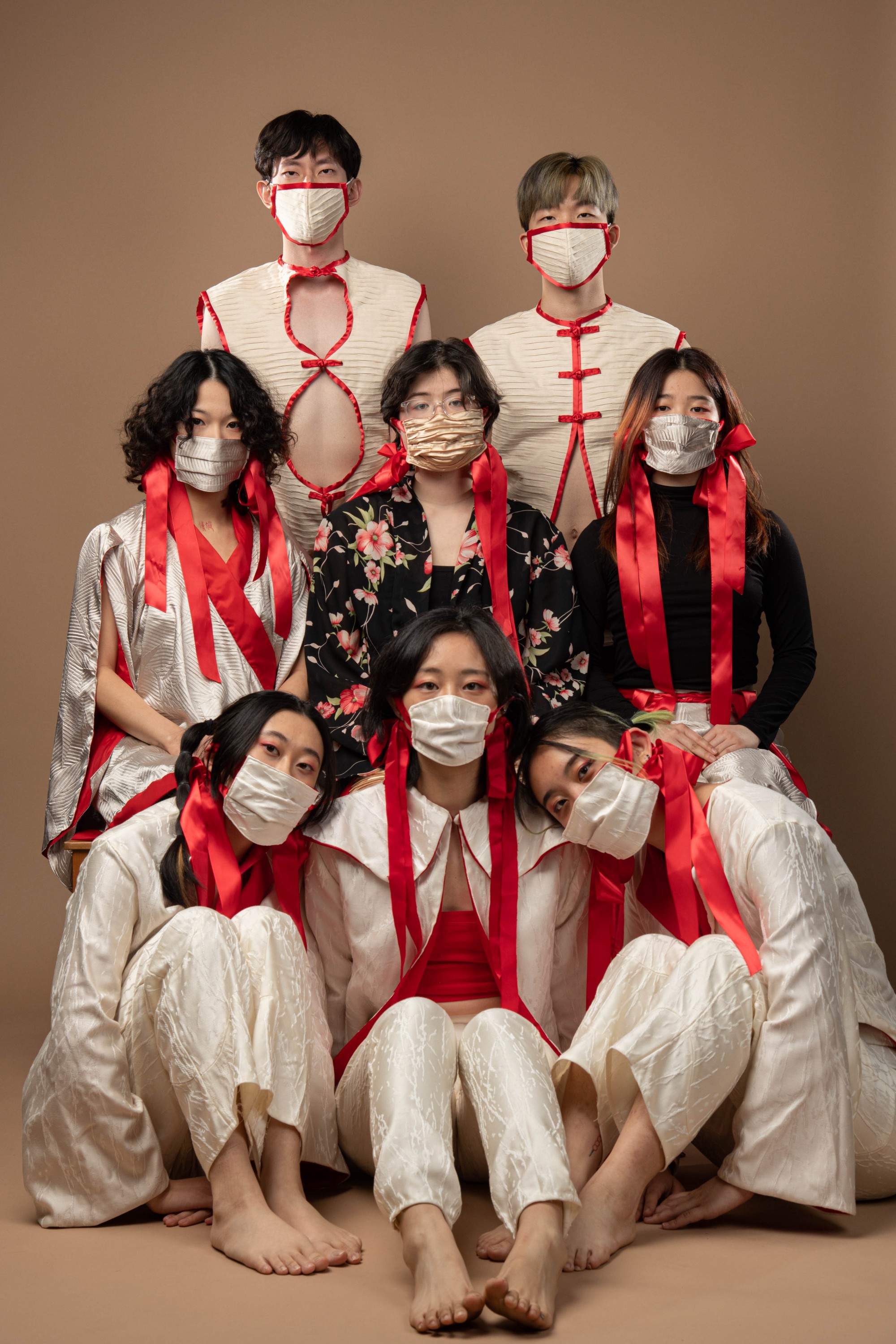Annika Cheng
 + Enlarge
+ Enlarge
The 福 decoration is one that is traditionally hung upside down on the front door of a home around the Lunar New Year. Made out of hand-woven bobbin lace, this piece investigates the flexibility but also the fragility of old traditions.
变脸 or “Face Changing” is a traditional magic performance in which a performer appears to change their face before your eyes. These objects are recontextualized to represent the ways in which Chinese American people “perform” their culture and are often forced to code-switch depending on their social environment. The colors red, white, and blue are traditional American colors, but also contain specific meanings in Beijing Opera performances.
The three tiles in 麻將牌 Mahjong Tiles capture the complexities of being Chinese American, representing how being American can grant immense privilege, but at the cost of personal cultural identity. The 東 East and 西 West tiles are nods to the two cultures. The eight of bamboo has a double meaning. The "eight" refers to eight as a Chinese lucky number, as it sounds similar to the term for "wealth". The suit of bamboo refers to the term 竹升 or "jook sing" meaning “empty bamboo”, which is used for Chinese Americans that are seen as too Westernized, or "empty of culture".
站直 Stand Up Straight embodies the social and cultural obligations placed on Chinese Americans through the fusion of traditional clothing and modern business wear. Faced with the contradictions of the model minority myth and a perpetual foreigner status, Chinese Americans are expected to be both assimilated and alien, successful but submissive. The business formal silhouettes of each look reflect the burden to conform placed on immigrant children. The subtle seam lines reference customary Chinese performances and show a quiet obligation to carry culture, something that is both an inheritance and a brand. The color red is a living motif, embodying tradition, sacrifice, pride, and ultimately transforming into courage. 站直 Stand Up Straight explores how Chinese Americans can find their own sense of identity despite these pressures.
This work began as a child’s garment that was stretched out to fit an adult woman, representing how my relationship to this traditional garment has changed as I’ve grown up. The spaces between the original fabric form the character 美, meaning beautiful. 美 also references the term for the United States, 美国, meaning “beautiful country”. It also happens to be my middle name. A dress that used to represent my cultural pride has been reformed into something exotified and Americanized.
Statement
My artwork examines the feelings and experiences unique to the sino-diaspora through the usage of the fiber medium. I recreate traditional Chinese garments, objects, and practices in order to recontextualize their meaning for a new generation of Chinese people. The soft nature of the fiber medium provides comfort, but also allows these objects to be pliable, representing the ways that culture can shift and change. This same pliability also interrogates the ways that Chinese culture has been manipulated, colonized, appropriated, orientalized, and fetishized by a Western gaze. My goal with my work is to be able to start important conversations around the orientalization of Chinese cultures, as well as to empower members of the diaspora to define what culture means to them. I wish to honor and preserve traditions, while also exploring ways they can adapt to fit modern contexts and create new hybrid cultures.







